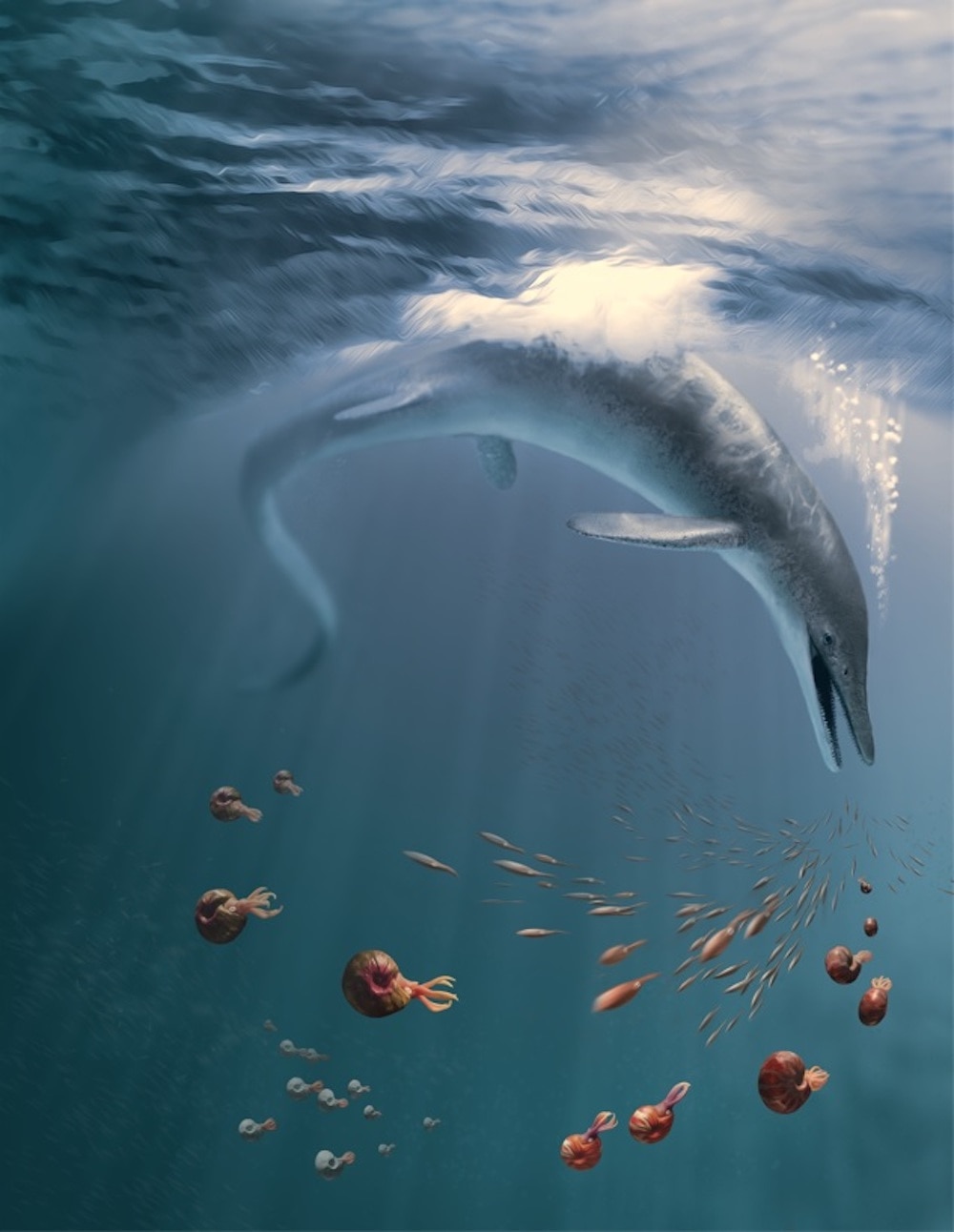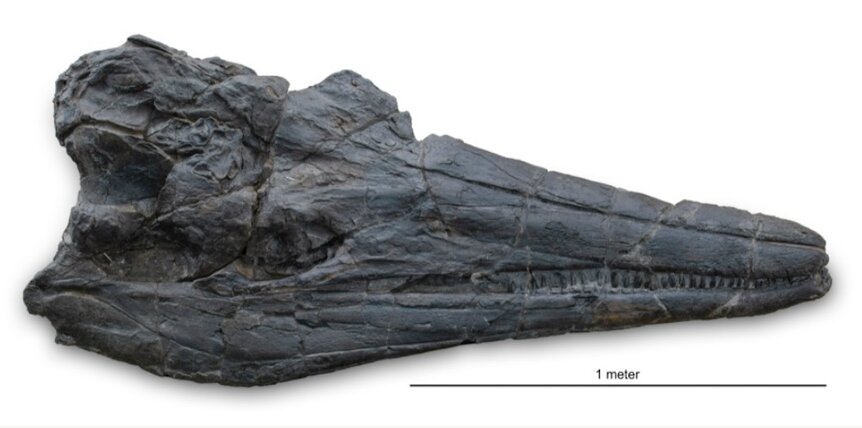Create a free profile to get unlimited access to exclusive videos, sweepstakes, and more!
Ichthyosaurs underwent rapid expansion to become the world’s first giants
Just when you thought it was safe to go back in the water.

Blue whales are the largest animals to have ever lived on Earth, at least as far as we know. Their watery environment lends itself to large size, both because of reduced stress on the body and the abundance of available food. So, it shouldn’t be any surprise that giant animals found their ways into the oceans before. What is surprising, however, is how early and how quickly it happened.
Martin Sander from The Dinosaur Institute at the Natural History Museum of Los Angeles County, and colleagues, uncovered an especially ancient ichthyosaur fossil in the Nevada desert which pushes back the date of ocean gigantism to the early Triassic. Their findings were published in the journal Science.
Sander first found the fossil in 1998 but didn’t yet know what he was looking at. There were only three vertebrae from the middle of the body visible in the rock, and while there was always a chance those vertebrae were connected to something more complete, it wasn’t a sure thing. They left it where it lay for more than a decade while they continued to investigate the area. Years later, Sander and his crew were caught outside in a snowstorm while hunting for fossils and returned to the site.
“We had to do something about warming up the crew, so we started digging to warm up. That’s when we realized the skull was there,” Sander told SYFY WIRE.
Even still, they thought they’d found a previously described animal of little scientific interest, but decided to release it from the ground and send it back to California as a museum specimen. The team flew in helicopters to get the bones back to the road and drove it the rest of the way to Los Angeles in a beer truck.
The specimen would eventually be named Cymbospondylus youngorum, a name chosen both for its early age and for the Young family who funded the dig and owns a brewery in Reno. It was their beer truck which ferried the fossil back to California.
“It wasn’t until 2018 that it became apparent it was not what we thought it was. Then we went into high gear,” Sander said. Freeing the fossil from the sediment took the better part of three years but when they were done they had a skull, part of the spine, and a forelimb.
The skull of C. youngorum measures roughly two meters in length. The bones, in total, suggest an animal measuring more than 17 meters from tip to tail, approximately the same size as a modern sperm whale. That these giant aquatic reptiles existed in our history was known, but scientists were surprised by the date of this specimen, hailing from some 246 million years ago, in the early Triassic.
“We have no evidence that there were any marine reptiles ancestral to these in the Permian ocean,” Sander said. “At 249 million years ago, these marine reptiles show up pretty much instantaneously around the world. It took only three million years to get from their origin to this large size.”
In many ways, ichthyosaurs were the whales of the early Earth, filling many of the same ecological niches. They evolved in a similar way, from previously terrestrial animals, and diversified along similar paths. Ichthyosaurs eventually included relatively small, toothed fish eaters and large bulk feeders which might have fit in nicely with modern dolphins and whales.
“What we see in ichthyosaurs is what we see in whales,” Sander said. “I like to look at it the other way around though, modern cetaceans do what ichthyosaurs did first.”
Earlier research has suggested that it might not have been possible to have large aquatic animals prior to 100 million years ago, before the emergence of certain plankton species which support the largest modern whales. Sander noted that the mere existence of C. youngorum means that isn’t the case, and that ocean-dwelling animals were growing to massive scales long before then, almost as quickly as was possible after the Permian extinction wiped the evolutionary slate clean.
That extinction event wiped out 95% of all life in the oceans and C. youngorum would have been a nightmare addition to fish, ammonites, and anything else venturing into the deep.



























